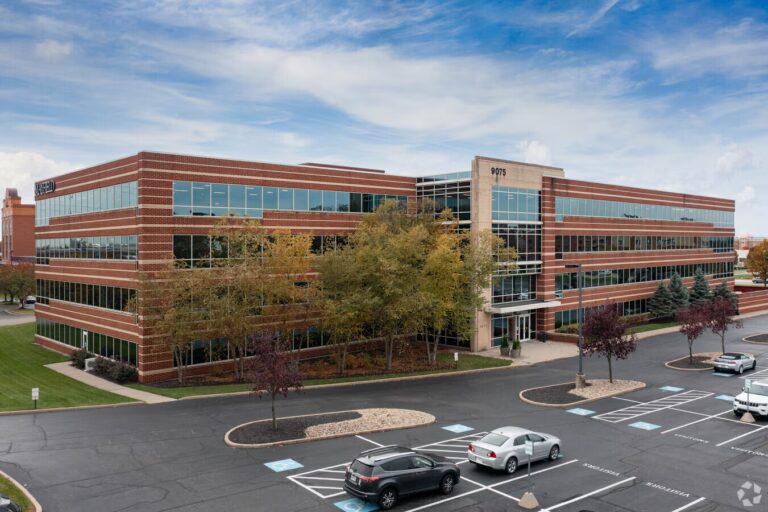Commercial Property Lending A Comprehensive 2025 Guide for Investors and Businesses
Commercial property lending refers to financing provided by banks, specialist lenders, or private funds for the acquisition, refinance, development, or investment in commercial real-estate assets-such as office buildings, retail centres, industrial warehouses, or multifamily properties. These loans are distinct from residential mortgages in structure, underwriting criteria, risk profile, and terms.
In 2025, commercial property lending is being shaped by rising interest rates, changing asset-class demand (for example, the office segment under pressure), and evolving criteria from lenders. According to lender listings, commercial real estate lenders remain active, despite the headwinds.
Why It Matters Now
For property investors or businesses acquiring commercial space, securing the right loan can mean the difference between profitable growth and financially constrained operations. With commercial property investments costing tens of millions, and with changes in tenant demand, occupancy, and technology integration, lenders are scrutinising deals more closely. As one resource puts it: “commercial property loans are typically offered by … specialist lenders” who are more flexible but selective.
Benefits of Using Commercial Property Lending
Leverage and Growth Acceleration
By using commercial property lending, an investor can leverage equity to acquire larger assets than would be possible with cash alone. This magnifies potential returns (though also risk). Businesses that need space can expand without tying up all their capital in real estate, allowing investment in operations, technology, or staffing instead.
Diversification of Portfolio and Flexibility
Commercial loans allow investors and companies to diversify into assets they might not otherwise attain. For instance, a company may finance a warehouse or a mixed-use building rather than only leasing. Additionally, refinancing options provided through commercial lending can free up capital or reduce the cost of capital. For example, one lender offers refinance solutions across California, Nevada, and Hawaii for industrial, office, and retail properties.
Access to Specialist Structures and Terms
Commercial property lending often comes with customised structures: longer amortisation schedules, interest-only periods, balloon payments, or non-recourse features. These structures allow borrowers to tailor financing to property type and cash-flow profile. For example, one bank offers up to 10-year terms and fixed or hybrid interest rate structures for commercial properties.
Top 5 Real-World Commercial Property Lending Platforms
Here are five leading lenders or lending platforms in the commercial property space, each with distinct strengths. Investors should evaluate their offering, geography, asset type focus, and flexibility.
1. J.P. Morgan Commercial Real Estate Lending

J.P. Morgan offers comprehensive financial solutions for purchase, refinance, and management of commercial properties. Their offering is suited for large-scale investors and companies needing global banking support, multi-asset financing, and integrated treasury solutions.
Details:
This platform supports both acquisition and refinance of commercial assets and has the capacity to structure complex deals. Because of the scale and brand, borrowers may benefit from bundled services: banking, asset management, and advisory. For a corporation seeking to expand into multiple properties or markets, this lender brings a strong presence and capacity.
2. Enness Global Commercial Property Finance
Enness highlights specialist commercial property loans, refinances, and alternative funding structures. Their model focuses on borrowers needing speed and flexibility, particularly in more complex or higher-risk assets.
Details:
Their offering suits borrowers who possibly don’t fit the traditional bank criteria—perhaps due to development risk, repositioning of asset, short-term equity release, or non-standard market. For example, they negotiate custom finance to fit the property lifecycle. For investors looking at value-add or reposition assets, such lenders provide tailored terms.
3. CIMB Niaga Commercial Property Financing

In Indonesia, CIMB Niaga offers commercial property financing for assets such as office, warehouse, or shop-house with tenures up to 10 years and considerable loan amounts (plafond up to Rp 30 billion).
Details:
For regional investors or businesses in Southeast Asia, this financing option can enable the acquisition of commercial premises domestically. Particularly for companies looking to own their premises rather than lease, securing local financing reduces currency risk and aligns with local asset ownership. This solves the problem of relying purely on foreign financing or leasing, thereby enabling control of the physical asset.
4. Finance Ireland Commercial Property Lending (Europe)
Finance Ireland offers tailored underwriting for loans from €1 million to €35 million across commercial property, including acquisition, refinance, and bridging.
Details:
This lender addresses professional property owners in Europe, supporting deals up to 100 % of required financing in some cases (capped at 80 % LTV). For investors seeking European exposure or refinancing existing assets, this option provides flexibility and specialist sector expertise. It solves the problem of rigid standard bank terms by offering custom packaging.
5. One Florida Bank Commercial Real Estate Lending

One Florida Bank provides a wide range of commercial real estate financing in Florida, including acquisition, refinance, new construction, and bridging across office, retail, and industrial sectors.
Details:
For regional investors or smaller commercial assets, such community banks offer responsive decision-making and local market understanding. For example, if an investor wants to purchase a small office building in Florida, this loan product provides a tailored solution for that market. It solves the challenge of accessing finance for non-mega assets and provides locality and flexibility.
How to Apply for Commercial Property Lending and Where to Find It
Step 1: Prepare Your Deal Materials
Before contacting lenders, prepare a clear package: property details (location, condition, asset class, tenant mix), business plan (for development/repositioning), financial statements, projected cash flow, and asset value/valuation. Lenders will evaluate loan-to-value (LTV), debt-service coverage ratio (DSCR), and market risk. Specialist lenders emphasise underwriting and may offer more flexibility. ennessglobal.com
Step 2: Short‐List Appropriate Lenders
Match your property type, geography, and financing needs to lenders. For example:
-
For large global deals: J.P. Morgan, major banks.
-
For repositioning or asset-light deals: specialist lenders like Enness.
-
For local/regional deals: community banks like One Florida.
-
For non-US or emergent markets: region-specific banks like CIMB Niaga.
-
For Euro,e: lenders like Finance Ireland.
Step 3: Submit Application and Receive Term Sheet
Once you choose the lender, submit your application. You may receive a term sheet detailing the loan amount, interest rate, term, amortisation, covenants, and exit strategy. Review carefully and negotiate. Terms are often bespoke in commercial lending.
Step 4: Due Diligence & Closing
Lenders will conduct asset inspection, market review, appraisal, legal review (title, leases), and underwriting. Upon approval, drawdown occurs and funds are disbursed per schedule (especially for construction or development financing).
Step 5: Manage Loan Post-Closing
Monitor property performance, lease occupancy, maintenance, and compliance with lender covenant. If everything goes well, you may refinance or exit to release equity. Leverage technology for ongoing loan and asset monitoring.
Where to Begin:
-
Contact a commercial banking division of a large bank (e.g., J.P. Morgan)
-
Engage a specialist lender or broker (e.g., Enness Global)
-
Approach regional banks for smaller assets (e.g., One Florida Bank)
-
Work with local banks in rthe egion of investment (e.g., CIMB Niaga in Indonesia)
-
Use European specialist lenders (e.g., Finance Ireland)
Use Cases: What Problems Does Commercial Property Lending Solve and Why You Need It
Acquisition of a Large Asset
Suppose an investor wants to buy a multi-tenant office building costing $20 million. Without financing, they’d need all cash. With commercial property lending, they can put down a smaller equity portion, retain liquidity, and acquire the asset. This solves the problem of capital limitation and accelerates portfolio growth.
Refinance to Free Up Equity and Improve Terms
An owner with an existing property may want to refinance due to high interest or a short-term loan expiry. Commercial property lending offers refinancing options to reduce cost, extend term, or release equity for redevelopment. It solves the problem of “locked in” high-cost debt and offers capital for repositioning.
Development or Repositioning Projects
If you purchase a property needing refurbishment and additional capital, a lender may provide a construction or bridge loan followed by permanent financing. That solves the challenge of sequencing-acquisition, build-out, and stabilisation within one financing structure (or linked structures). As one lender says: “We lend across the lifecycle of a building – covering land acquisition, planning, development, refurbishment and more.”
Regional Expansion of a Business
A company seeking to buy or lease commercial premises across regions may use property lending to own its real estate in each location. Rather than leasing in multiple places, owning provides control, potential tax benefits, and long‐term asset wealth. A well-structured loan allows this without tying up all operating capital.
Strategic Portfolio Exit Planning
An investor may wish to restructure their portfolio by selling less-performing assets and refinancing others. Commercial property lending enables flexible exit strategies, partial ownership, or recapitalization. It solves the issue of inflexible debt tying up assets.
Frequently Asked Questions
Q1:What are the typical loan-to-value (LTV) and debt-service coverage ratio (DSCR) for commercial property loans?
LTV and DSCR depend on asset type, location, ttenant profilel e ,and risk. For instance, some lenders will finance up to 80 % of the value (LTV) in favorable cases. For example, one EU lender offers up to 100 % of the financing requirement, capped at 80 % LTV. DSCR generally needs to be above 1.2x–1.5x, depending on risk.
Q2: Can small investors access commercial property lending, or is it only for large players?
While the largest banks cater to major institutional deals, there are lenders and regional banks offering loans for smaller commercial properties. For example, CIMB Niaga in Indonesia offers financing to purchase commercial offices, warehouses, etc for businesses. Therefore, smaller investors can access commercial lending, though perhaps at different terms.
Q3: How does technology influence commercial property lending today?
Technology plays an increasing role: lenders use data analytics, market benchmarking, aautomated underwriting and reautomatednspections to speed decision-making. Smart building infrastructure in the asset improves loan performance by reducing risk (energy costs, vacancy). Agents and lenders leveraging analytics can better evaluate asset quality and borrower risk, meaning more competitive terms for tech-savvy borrowers.





